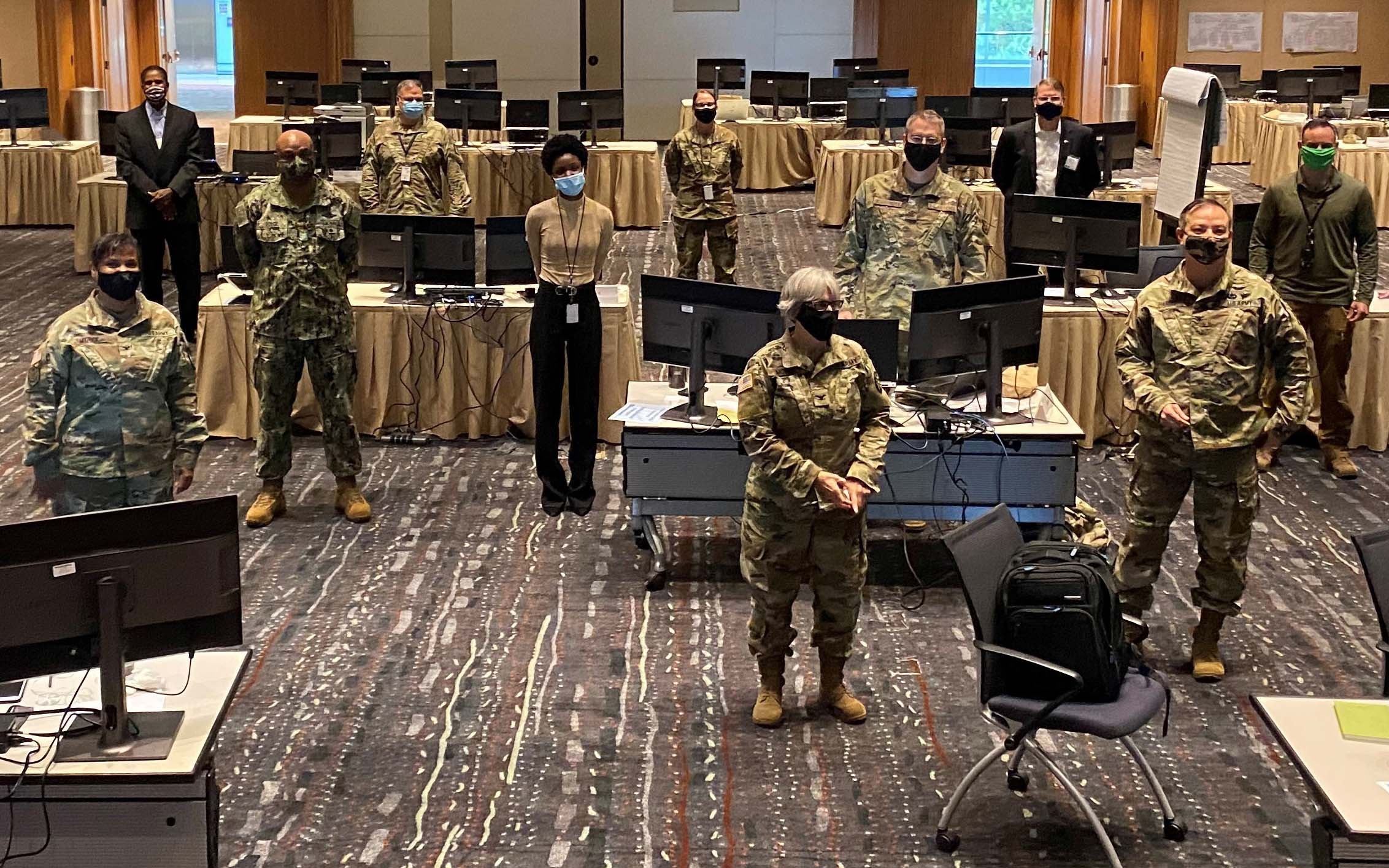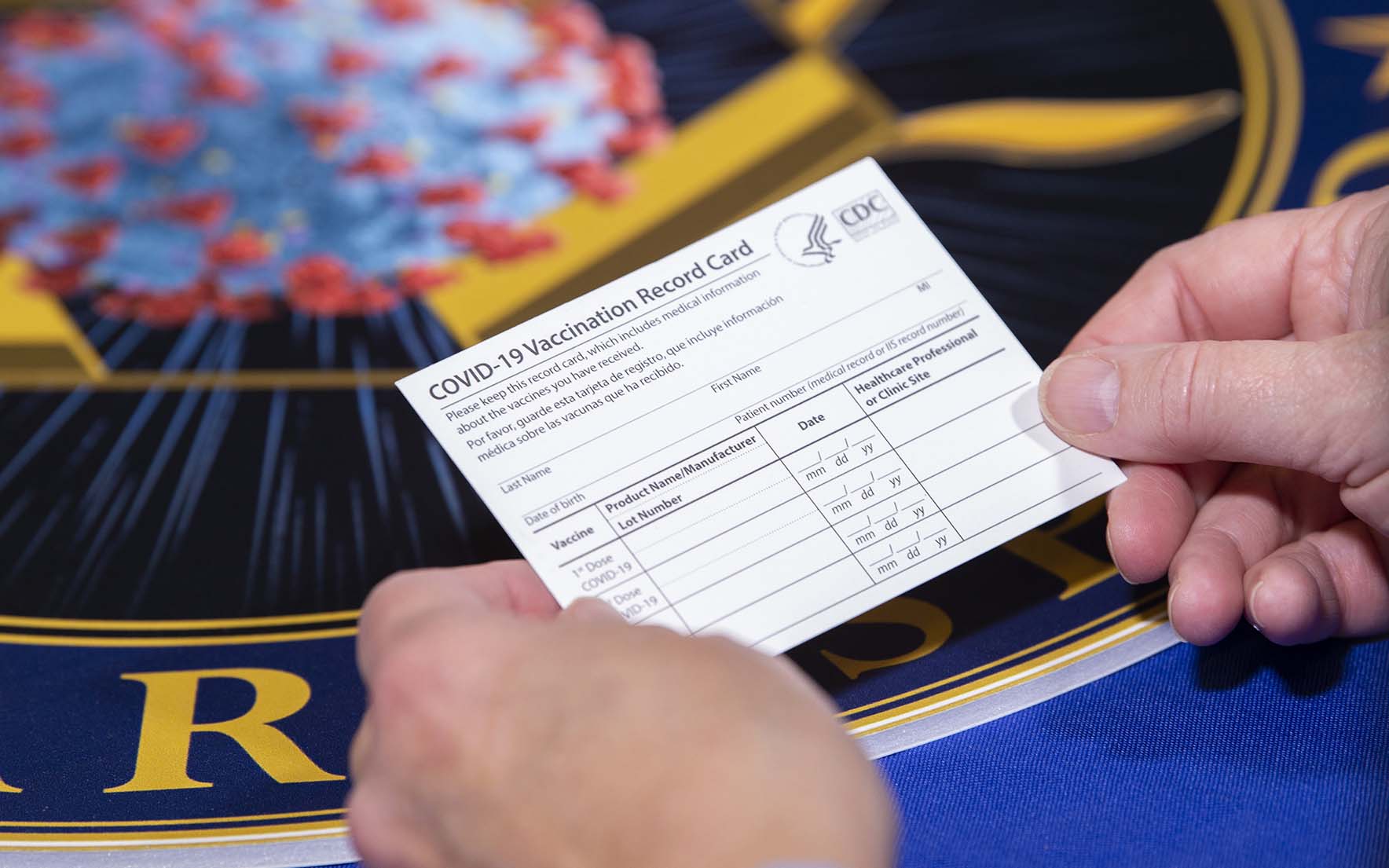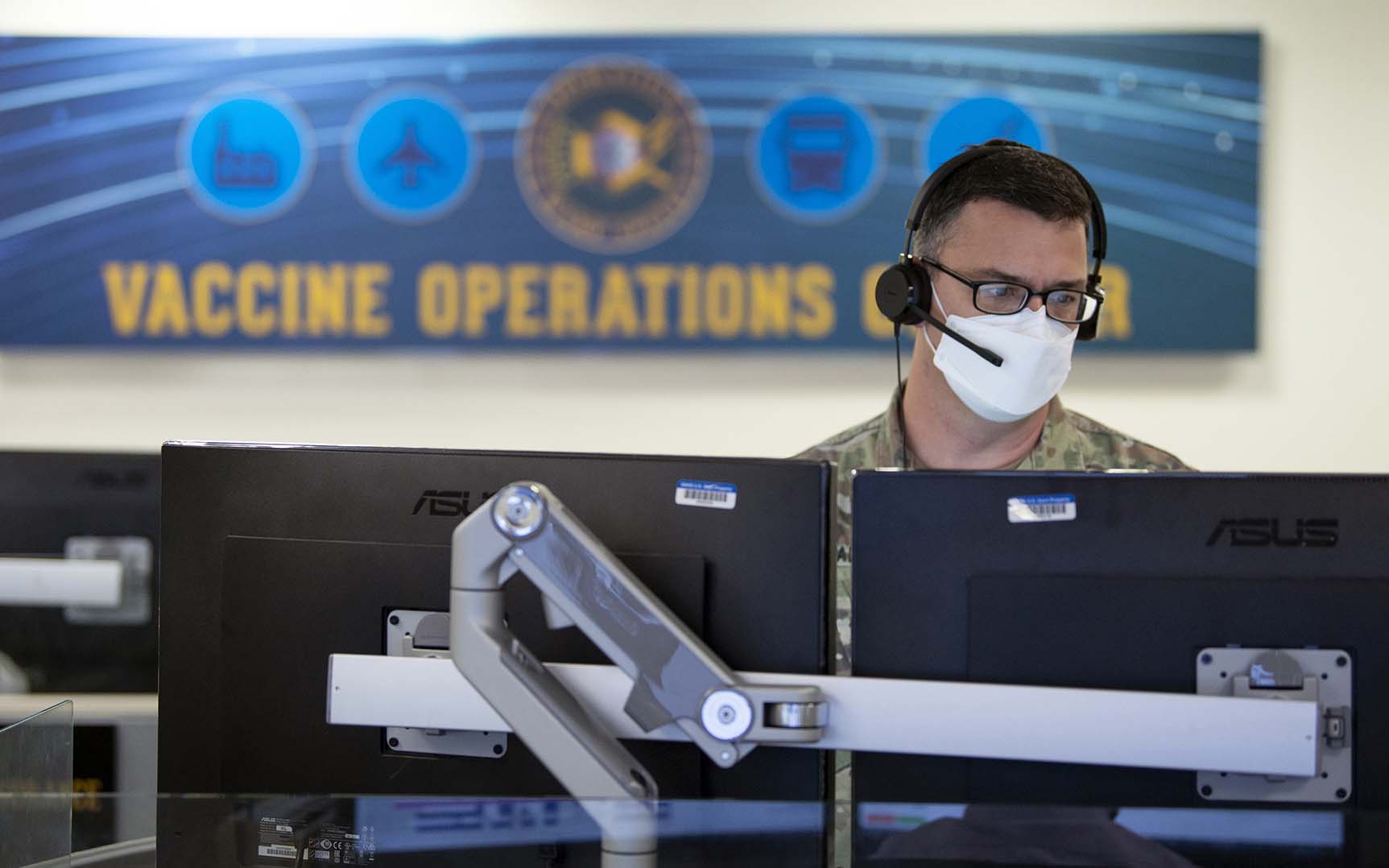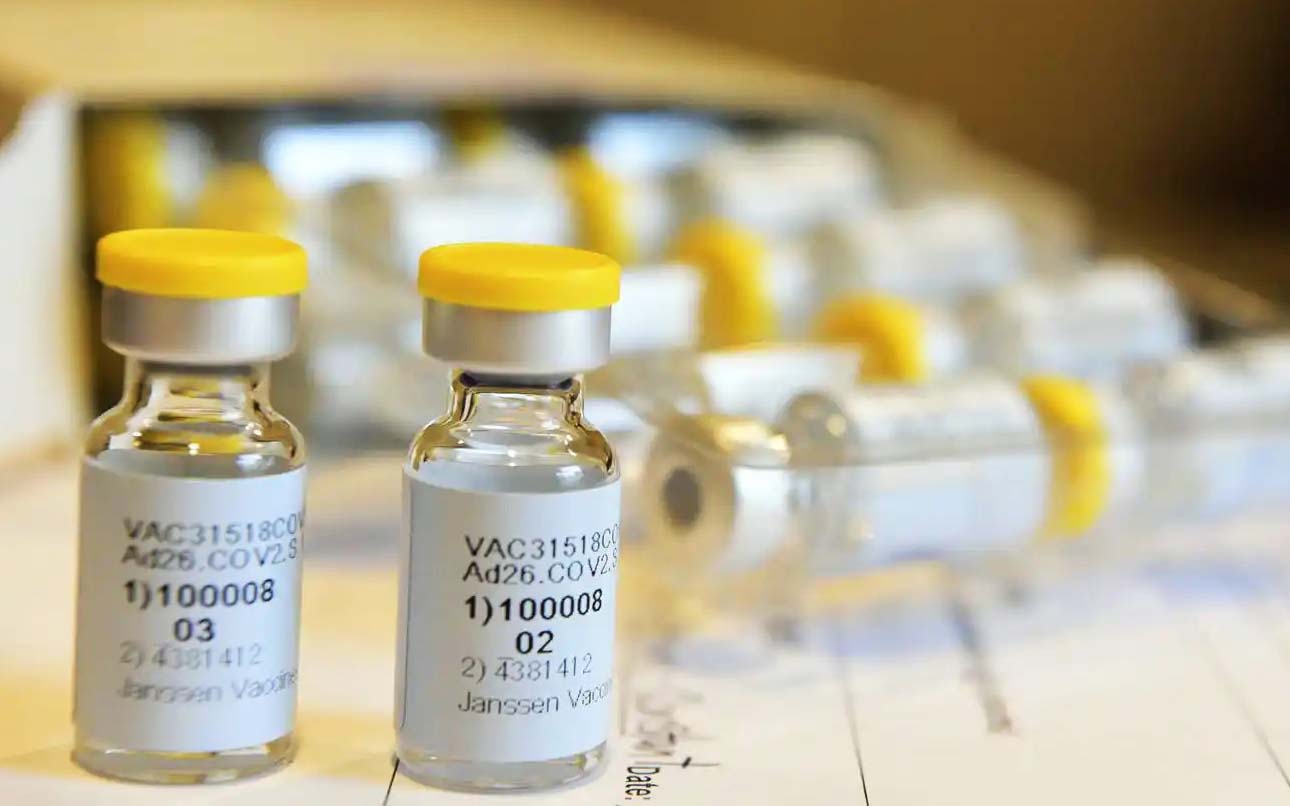New Pfizer, Moderna vaccines show effectiveness against COVID-19, production to begin by Christmas
November 23-29, 2020
As Arkansas and rest of the U.S. experience a second wave of COVID-19 cases heading into the holiday season, two recent announcements concerning a potential coronavirus cure offer promise that some parts of the nation could return to some semblance of normal by early 2021.
Less than a week apart earlier this month, three major pharmaceutical companies participating in the Trump administration’s Operation Warp Speed project to accelerate efforts to find a COVID-19 cure proclaimed market-moving, COVID-19 breakthroughs from final Phase 3 clinical trials. Those late stage studies for COVID-19 cure-alls are designed to evaluate if an investigational vaccine can prevent symptomatic coronavirus in adults.
On Nov. 9, Pfizer Inc. and BioNTech SE first declared that their mRNA-based vaccine candidate against COVID-19, called BNT162b2, has demonstrated evidence of efficacy against COVID-19 in participants without prior evidence of SARS-CoV-2 infection. Those Phase 3 trials were conducted on Nov. 8 by the independent Data Monitoring Committee (DMC), an unbiased group of experts who monitor patient safety and treatment efficacy data during a clinical study.
After discussion with the U.S. Food & Drug Administration (FDA), which is responsible for fast-track authorization of COVID-19 vaccines, Pfizer and BioNTech elected to end an early 32-person interim study and conduct the first interim analysis at a minimum of 62 cases. After FDA consultation, Pfizer increased the case count to be evaluated to 94 and the DMC performed its first analysis on all cases.
According to company officials, the case split between vaccinated individuals and those who received the placebo indicates a vaccine so-called efficacy rate above 90%, seven days after the second dose. This means that effective protection from the virus is achieved 28 days after the initiation of the vaccination, which consists of a two-dose schedule. Pfizer said the independent DMC has not reported any serious safety concerns and recommends that the study continues as planned and be shared with vaccine regulators across the globe.
“(This) is a great day for science and humanity. The first set of results from our Phase 3 COVID-19 vaccine trial provides the initial evidence of our vaccine’s ability to prevent COVID-19,” cheered Pfizer Chairman and CEO Dr. Albert Bourla. “We are reaching this critical milestone in our vaccine development program at a time when the world needs it most with infection rates setting new records, hospitals nearing over-capacity and economies struggling to reopen.”
The final clinical trial of BNT162b2 began on July 27 and has enrolled 43,538 participants to date, 38,955 of whom have received a second dose of the vaccine candidate during the early weeks of November. Nearly 42% of those global participants and 30% of U.S. testers have racially and ethnically diverse backgrounds, Pfizer noted, adding that the trial is continuing to enroll through final trials when a total of 164 confirmed COVID-19 cases are tested.
Pfizer and its smaller biotech partner BioNTech, based in Mainz, Germany, said the late stage BNT162b2 study will also evaluate the potential for the vaccine candidate to provide protection against COVID-19 in those who have had prior exposure to the SARS-CoV-2 virus and severe cases of the disease.
The final BNT162b2 analysis will also now include new secondary endpoints evaluating efficacy 14 days after the second dose as well. The two biotech giants believe that the addition of the secondary goals will help align data across all COVID-19 vaccine studies and allow for crossover trial learnings and comparisons between these novel vaccine platforms.
“The first interim analysis of our global Phase 3 study provides evidence that a vaccine may effectively prevent COVID-19. This is a victory for innovation, science and a global collaborative effort,” said Prof. Ugur Sahin, BioNTech co-founder and CEO. “When we embarked on this journey 10 months ago this is what we aspired to achieve. Especially today, while we are all in the midst of a second wave and many of us in lockdown, we appreciate even more how important this milestone is on our path towards ending this pandemic and for all of us to regain a sense of normality.”
Sahin continued: “We will continue to collect further data as the trial continues to enroll for a final analysis planned when a total of 164 confirmed COVID-19 cases have accrued.”
Within days after the Pfizer and BioNTech announcement, both companies said they expect to produce globally up to 50 million vaccine doses in 2020 and up to 1.3 billion doses in 2021. Pfizer, which has global headquarters in New York City and Mainz, said it has reached an agreement with the European Commission to supply 200 million doses of BNT162b2 to European Union (EU) Member States, with an option for the European Commission to request an additional 100 million doses.
“(This) finalized supply agreement with the European Commission represents the largest initial order of vaccine doses for Pfizer and BioNTech to date and a major step toward our shared goal of making a COVID-19 vaccine available to vulnerable populations,” said Bourla, adding that the earliest deliveries of the vaccine are expected to start by the end of 2020.
Operation Warp Speed plan accelerates COVID-19 cures
What is not clear is the timetable for the Pfizer vaccine roll out in the U.S. Although Pfizer is listed as partner in the Trump administration’s Operation Warp Speed (OWS) and Accelerating COVID-19 Therapeutic Interventions and Vaccines (ACTIV) projects to find a vaccine to thwart the fast-spreading virus, the company’s plan to push out its coronavirus cure in the U.S. has not yet been unveiled.
On July 22, U.S. Department of Health and Human Services (HHS) announced that it had awarded up to $1.95 billion in funds to Pfizer for the large-scale manufacturing and nationwide distribution of 100 million doses of their vaccine candidate. The federal government will own 100 million doses of the vaccine initially produced as a result of this agreement, and Pfizer will deliver the doses in the U.S. if the product successfully receives FDA or EU approval after completing its ongoing trials.
In recent days, HHS Secretary Alex Azar, a former pharmaceutical executive at Eli Lilly, has said that Pfizer is a key participant in its nationwide operation to accelerate efforts to produce and deliver 300 million doses of safe and effective vaccines with the initial doses available by January 2021. President Donald Trump also took credit for the Pfizer vaccine in a White House press conference on Nov. 13.
“As a result of Operation Warp Speed, Pfizer announced on Monday that its China virus vaccine is more than 90% effective. This far exceeds any and all expectations. Nobody thought they’d get to that level. And we have others coming which we think will be at equal level — maybe more, if that’s possible,” said Trump during his press briefing. “In July, my administration reached an agreement with Pfizer to provide $1.95 billion to support the mass manufacturing and distribution of 100 million doses, with the option to purchase a total of 600 million doses shortly thereafter. Our investment will make it possible for the vaccine to be provided by Pfizer free of charge.”
“Pfizer said it wasn’t part of (Operation) Warp Speed, but that turned out to be an unfortunate misrepresentation. They are part. That’s why we gave them the $1.95 million — billion dollars. And it was an unfortunate mistake that they made when they said that. We will work to secure an emergency use authorization, which should be coming down extremely soon,” Trump concluded.
On Monday (Nov. 16) after Trump’s upbraid, Pfizer announced that it had launched a pilot delivery program for its experimental COVID-19 vaccine in four U.S. states to address ultra-cold storage challenges of BNT162b2. According to company officials, it must be shipped and stored at -70 degrees Celsius (minus 94°F), significantly below the standard for vaccines of 2-8 degrees Celsius (36-46°F).
“We are hopeful that results from this vaccine delivery pilot will serve as the model for other U.S. states and international governments, as they prepare to implement effective COVID-19 vaccine programs,” Pfizer officials stated.
Trump also said that three other vaccines are also in the final stages of testing, including Moderna’s Inc. announcement on Nov. 16 that the Phase 3 study of its vaccine candidate against COVID-19, called mRNA-1273, has met the statistical criteria pre-specified in the study protocol for efficacy. This trial, known as the COVE study, enrolled more than 30,000 participants in study reviewed by the National Institutes of Health’s (NIH) independent Data Safety Monitoring Board (DSMB).
As a central part of the Trump administration’s effort to find a COVID-19 cure, the Moderna study is being conducted in collaboration with NIH’S National Institute of Allergy and Infectious Diseases (NIAID), the Biomedical Advanced Research and Development Authority (BARDA) housed in HHS. According to Moderna, the recent trails for its vaccine candidate against COVID-19 shows a vaccine efficacy of 94.5%.
“This is a pivotal moment in the development of our COVID-19 vaccine candidate. Since early January, we have chased this virus with the intent to protect as many people around the world as possible. All along, we have known that each day matters,” said Moderna CEO Stéphane Bancel. “This positive interim analysis from our Phase 3 study has given us the first clinical validation that our vaccine can prevent COVID-19 disease, including severe disease.”
In mid-April, about a month after COVID-19 was declared a global pandemic, HHS made up to $483 million in support available for Moderna’s candidate vaccine, which began Phase 1 trials on March 16 and received a fast-track designation from FDA. This agreement was expanded on July 26 to include an additional $472 million to support late-stage clinical development, including the expanded Phase 3 study of the company’s mRNA vaccine.
In highlighting Moderna’s vaccine candidate, the independent DSMB panel overseeing the Phase 3 trial of mRNA-1273 shared its interim analysis on Nov. 15 suggesting that the vaccine candidate co-developed by the Cambridge, Massachusetts-based biotechnology firm and NIHis safe and effective at preventing symptomatic COVID-19 in adults.
According to Moderna, more than 30,000 participants at 100 clinical research sites in the U.S. are participating in the study. Recognizing the disproportionate impact of the epidemic on underrepresented minority populations, investigators worked with community engagement partners to enroll a diverse pool of participants, including 37% of trial volunteers representing “racial and ethnic minorities,” officials said.
Based on the interim safety and efficacy data, Moderna said it intends to submit for an Emergency Use Authorization (EUA) with the FDA in the coming weeks and will inform the EUA of safety and efficacy results over the next two months. The Boston biotech also plans to submit applications for authorizations to global regulatory agencies, it said.
Today, Moderna is working with the CDC, OWS partners and McKesson, a COVID-19 vaccine distributor contracted by the U.S. government, as well as global stakeholders to be prepared for distribution of mRNA-1273. By the end of 2020, the East Coast pharmaceutical, which has seen its stock price balloon nearly 450% from $18.34 a year ago to $97.95 at the close of business on Nov. 16, expects to have approximately 20 million doses of mRNA-1273 ready to ship in the U.S. and remains on track to manufacture 500 million to 1 billion doses globally in 2021.
PHOTO CAPTIONS:
1. An Operation Warp Speed contingent in Atlanta is working with regional coordinators on the distribution efforts for the COVID-19 vaccine. (Photo by Department Of Defense)
2. Army Col. Aron Meadow works inside Operation Warp Speed (OWS) headquarters in Washington, D.C. OWS is an effort by several government components and public partnerships to facilitate the development, manufacture, and distribution of COVID-19 vaccines. (Photo by Department Of Defense)
3. A potential COVID-19 vaccine is currently in the testing stage in New Orleans, Sept. 28, 2020. (Photo provided by Department of Defense)
4. A HHS employee holds a COVID-19 vaccine record card at Operation Warp Speed headquarters in Washington, D.C. The cards will be sent out as part of vaccination kits from Operation Warp Speed. (Photo by U.S. Department of Health and Human Services (HHS)






